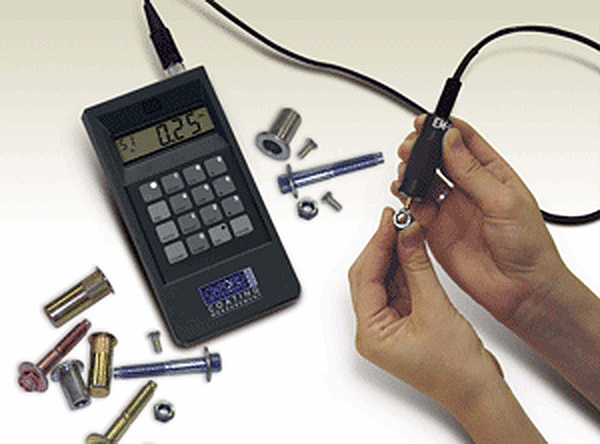Taking Coating Thickness Measurements on Corners
Can coating thickness measurements be taken on or near edges or corners?

Coating thickness measurements are commonly taken to verify a protective coating meets the specification requirements. For structural steel that has been galvanized, the most commonly used specification is ASTM A123. One of the methods this specification defines for verifying coating thickness is using a magnetic thickness gauge. Magnetic thickness gauges are popular because they are easy and quick to use, accurate, and can store many different measurements, which can be accessed at a later time. The specification that describes how to use a magnetic thickness gauge is ASTM E376 Standard Practice for Measuring Coating Thickness by Magnetic-Field or Eddy-Current (Electromagnetic) Examination Methods.
Like any coating thickness gauge, magnetic thickness gauges must be used correctly or they will not give an accurate reading. ASTM E376 discusses one potential area for misuse of magnetic thickness gauges in Section 5.5. Namely, this section explains taking coating thickness measurements too close to an edge or corner (1/8 to 1/2 inch from an edge or corner) can result in an inaccurate reading unless the probe is designed specifically for measuring those types of areas/surfaces. In other words, using a magnetic thickness gauge that is not specifically designed for taking readings at corners and edges to measure the coating thickness at an edge or corner will give an inaccurate reading. Furthermore, the curvature of a surface being measured can also affect coating thickness measurements (see Section 5.6 of ASTM E376). Coating thickness measurements will be most accurate when they are taken on flat surfaces and at least a 1/2 inch away from an edge or corner.
© 2025 American Galvanizers Association. The material provided herein has been developed to provide accurate and authoritative information about after-fabrication hot-dip galvanized steel. This material provides general information only and is not intended as a substitute for competent professional examination and verification as to suitability and applicability. The information provided herein is not intended as a representation or warranty on the part of the AGA. Anyone making use of this information assumes all liability arising from such use.
